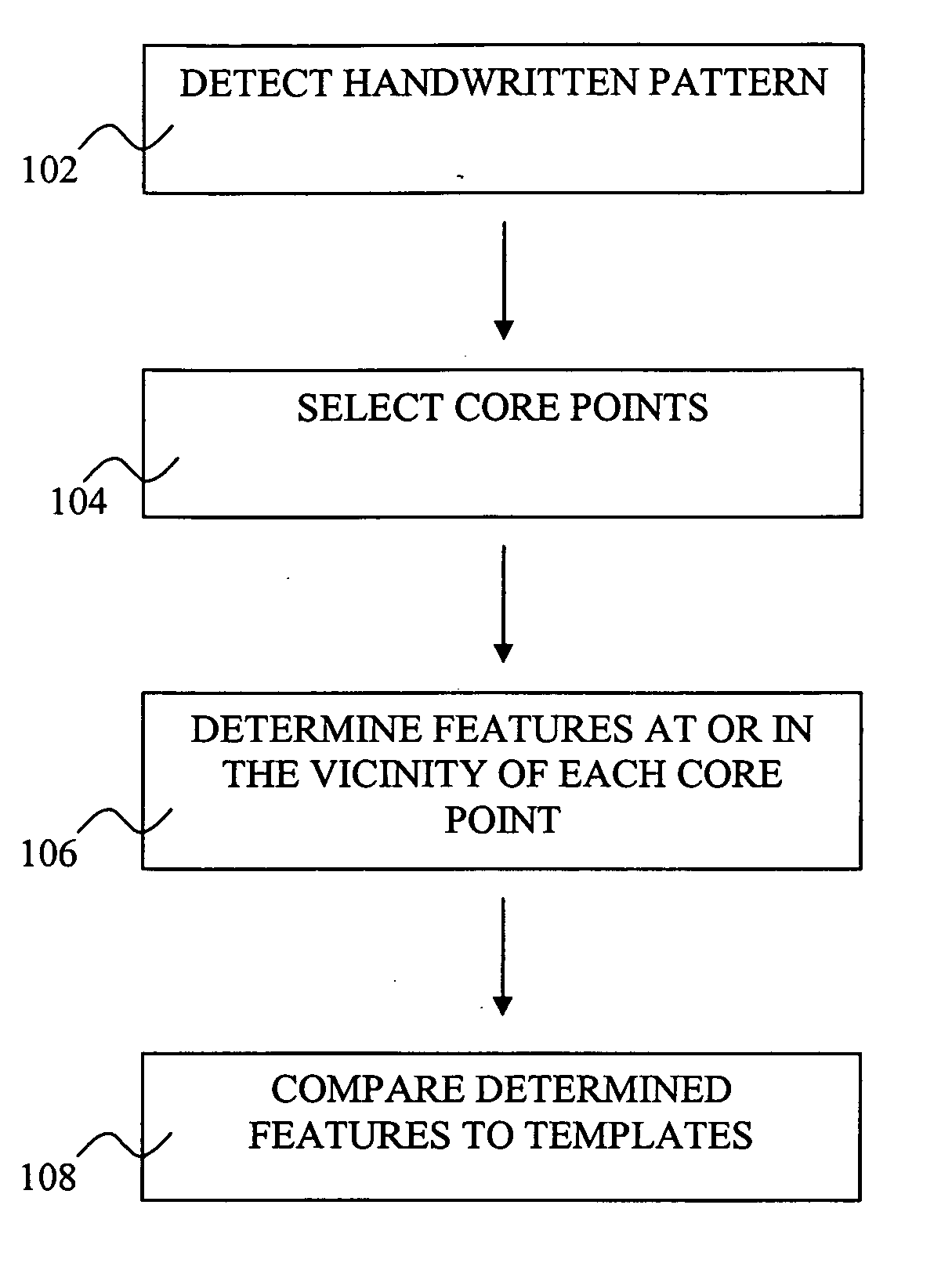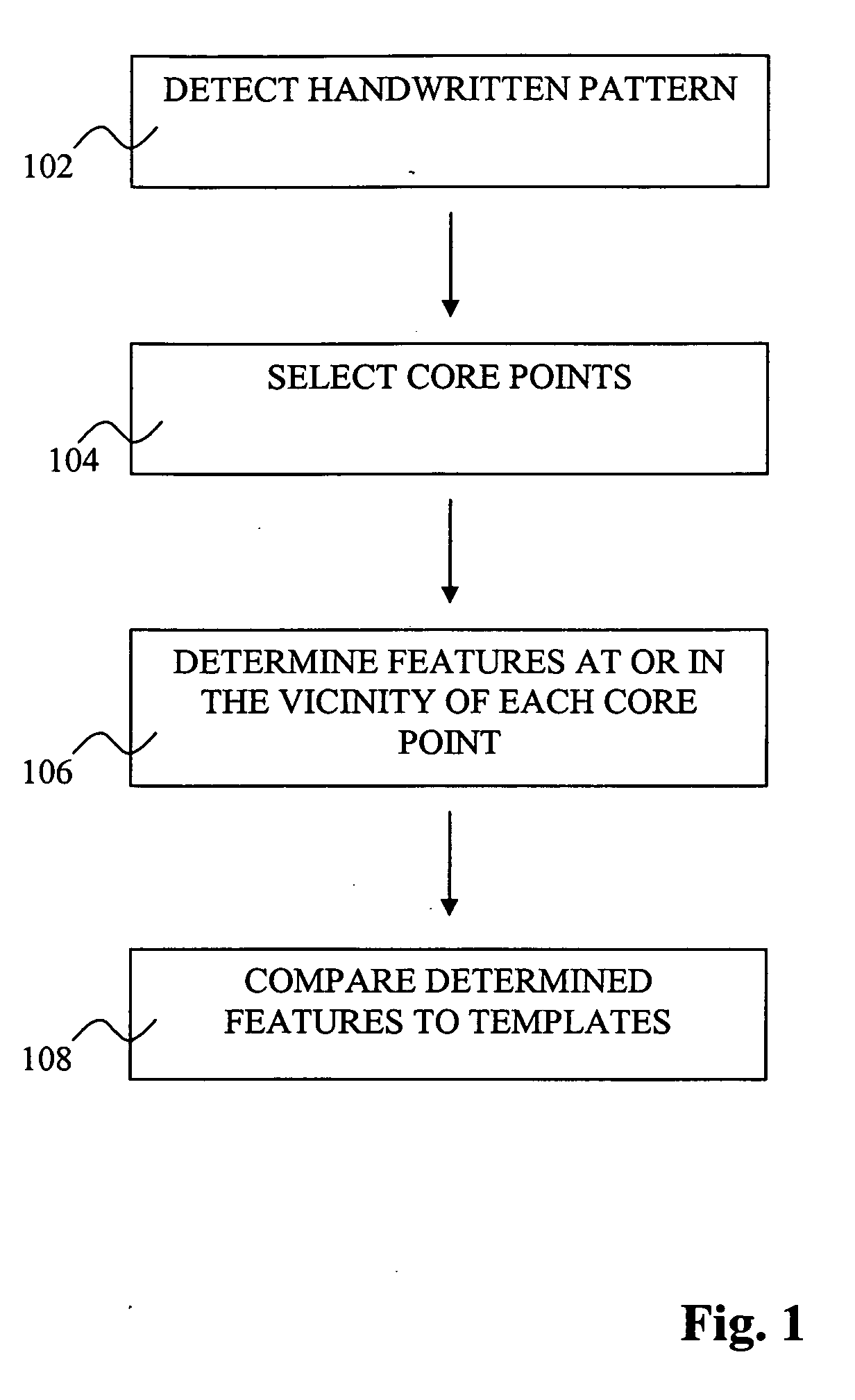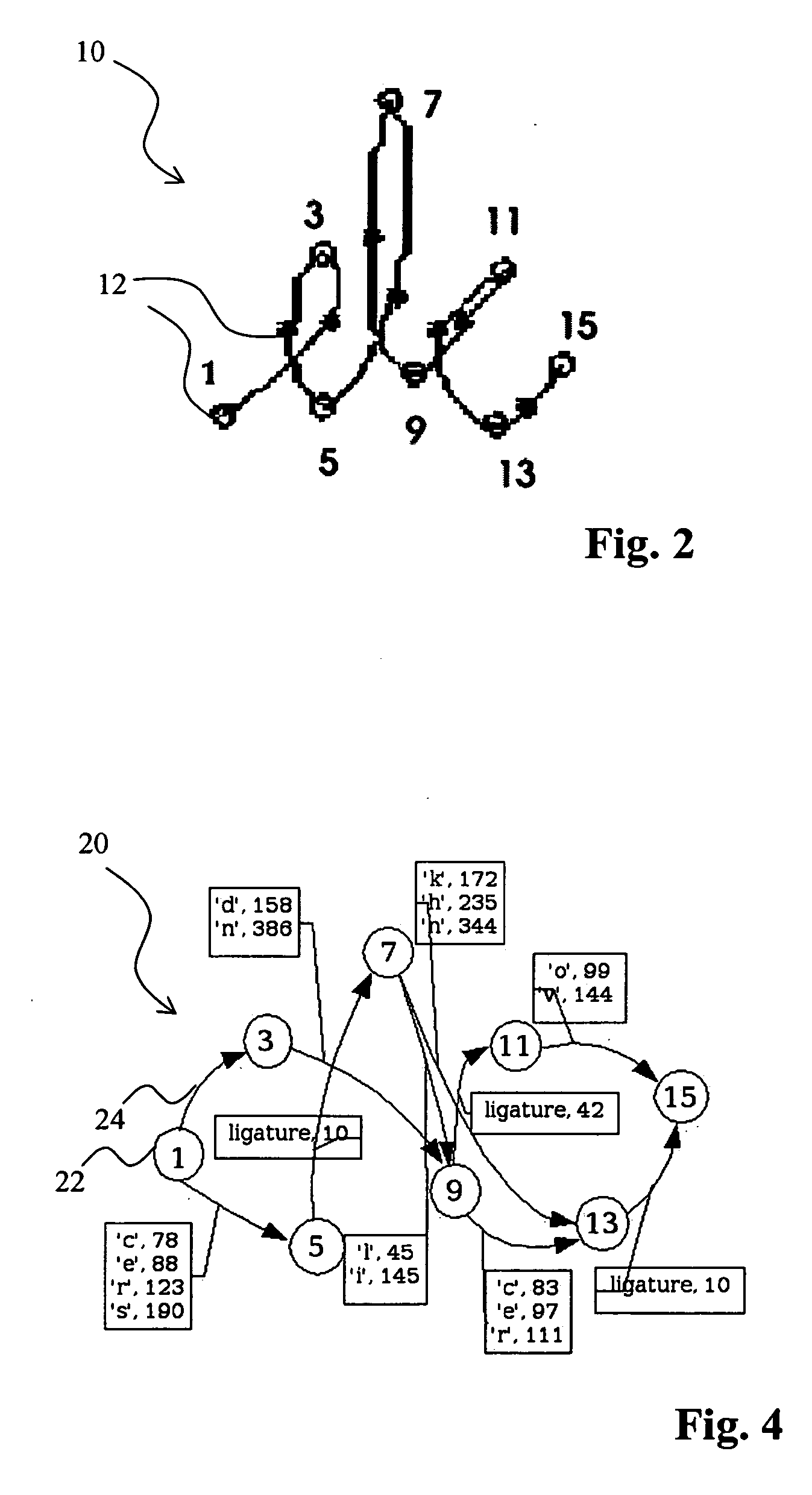Segmentation-based recognition
a segmentation-based recognition and pattern recognition technology, applied in the field of segmentation-based recognition, can solve the problems of increasing the complexity of cursive handwriting recognition, complicating the construction of a lucid sequential recognition system, and unable to recognize separate characters, so as to achieve the effect of quick segmentation and recognition of handwritten patterns, large learning power, and great processing power
- Summary
- Abstract
- Description
- Claims
- Application Information
AI Technical Summary
Benefits of technology
Problems solved by technology
Method used
Image
Examples
Embodiment Construction
[0047] Referring to FIG. 1, a method for recognizing a handwritten pattern will now be described. First, the handwritten pattern is detected, step 102. Typically, a user may write the handwritten pattern with a stylus on a pressure-sensitive screen, whereby the handwriting is detected by sampling the position of the stylus at regular intervals. In this way, a time-sequence of points may be obtained. The handwriting may be detected in several other ways, such as by using sensors that detect e.g. an electrical connection being formed between a pen and a writing surface or sensors detecting movements of a pen. Also, the handwritten pattern may be detected by scanning a paper on which the handwritten pattern has been written. Then, the handwriting may be detected as a sequence of points on a writing surface, wherein the sequence depends on where the points are placed in relation to each other, i.e. a spatial sequence of points.
[0048] Now, core points are selected among the sequence of ...
PUM
 Login to View More
Login to View More Abstract
Description
Claims
Application Information
 Login to View More
Login to View More - R&D
- Intellectual Property
- Life Sciences
- Materials
- Tech Scout
- Unparalleled Data Quality
- Higher Quality Content
- 60% Fewer Hallucinations
Browse by: Latest US Patents, China's latest patents, Technical Efficacy Thesaurus, Application Domain, Technology Topic, Popular Technical Reports.
© 2025 PatSnap. All rights reserved.Legal|Privacy policy|Modern Slavery Act Transparency Statement|Sitemap|About US| Contact US: help@patsnap.com



